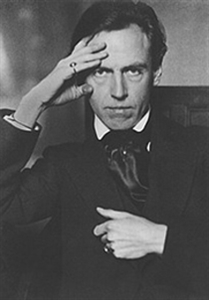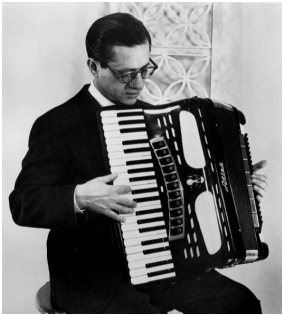A rhapsody in music is a one-movement work that is episodic yet integrated, free-flowing in structure, featuring a range of highly contrasted moods, colour, and tonality. An air of spontaneous inspiration and a sense of improvisation make it freer in form than a set of variations.
The word rhapsody is derived from the Greek : ῥαψῳδός, rhapsōidos, a reciter of epic poetry (a rhapsodist), and came to be used in Europe by the 16th century as a designation for literary forms, not only epic poems, but also for collections of miscellaneous writings and, later, any extravagant expression of sentiment or feeling. In the 18th century, literary rhapsodies first became linked with music, as in Christian Friedrich Daniel Schubart's Musicalische Rhapsodien (1786), a collection of songs with keyboard accompaniment, together with a few solo keyboard pieces. [1] The first solo piano compositions with the title, however, were Václav Jan Tomášek’s fifteen Rhapsodies, the first of which appeared in 1810. [2] Although vocal examples may be found as late as Brahms's Alto Rhapsody , Op. 53 (1869), in the 19th century the rhapsody had become primarily an instrumental form, first for the piano and then, in the second half of the century, a large-scale nationalistic orchestral "epic"—a fashion initiated by Franz Liszt. [1] Interest in Romani violin playing beginning in the mid-19th century led to a number of important pieces in that style, in particular by Liszt, Antonín Dvořák, George Enescu, Ernst von Dohnányi, and Béla Bartók, and in the early 20th century British composers exhibiting the influence of folksong composed a number of examples, including Ralph Vaughan Williams's three Norfolk Rhapsodies , George Butterworth's A Shropshire Lad , and Frederick Delius's Brigg Fair (which is subtitled "An English Rhapsody"). [3]
In modern times, several composers have endeavored to feature non-traditional orchestral instruments within the context of the rhapsody. During the post World War II era, John Serry Sr. showcased the chromatic piano accordion within his American Rhapsody (Alpha Music Publishing, 1955). [4] [5] [6] Decades later, Ney Gabriel Rosauro included the Brazilian berimbau as well as the Brazilian repinique within his Rhapsody for Solo Percussion and Orchestra (1992) while also incorporating an optional section in which the performers are encouraged to include a favorite exotic or folklordic instrument. [7]
In 1975, the British rock band Queen released "Bohemian Rhapsody", a bombastic mock-operatic rock song which is in the form of a four-part suite, but performed with rock instrumentation. [8] Though described by its composer Freddie Mercury as a "mock opera", [9] it has also been characterized as a "sort of seven-minute rock cantata (or 'megasong') in three distinct movements". [10] It became one of the UK's best-selling singles of all time. [11]
Some familiar examples may give an idea of the character of a rhapsody:
A concerto is, from the late Baroque era, mostly understood as an instrumental composition, written for one or more soloists accompanied by an orchestra or other ensemble. The typical three-movement structure, a slow movement preceded and followed by fast movements, became a standard from the early 18th century.
Julius Baker was one of the foremost American orchestral flute players. During the course of five decades he concertized with several of America's premier orchestral ensembles including the Chicago Symphony and the New York Philharmonic Orchestra.

George Enescu, known in France as Georges Enesco, was a Romanian composer, violinist, conductor, and teacher and is regarded as one of the greatest musicians in Romanian history.

Ernst von Dohnányi was a Hungarian composer, pianist and conductor. He used a German form of his name on most published compositions.

Cyril Meir Scott was an English composer, writer, poet, and occultist. He created around four hundred musical compositions including piano, violin, cello concertos, symphonies, and operas. He also wrote around 20 pamphlets and books on occult topics and natural health.
The "Anvil Chorus" is the English name for the Coro di Zingari, a chorus from act 2, scene 1 of Giuseppe Verdi's 1853 opera Il trovatore. It depicts Spanish Gypsies striking their anvils at dawn – hence its English name – and singing the praises of hard work, good wine, and Gypsy women. The piece is also commonly known by its opening words, "Vedi! Le fosche".

John Serry Sr. was an American concert accordionist, arranger, composer, organist, and educator. He performed on the CBS Radio and Television networks and contributed to Voice of America's cultural diplomacy initiatives during the Golden Age of Radio. He also concertized on the accordion as a member of several orchestras and jazz ensembles for nearly forty years between the 1930s and 1960s.
A ballade, in classical music since the late 18th century, refers to a setting of a literary ballad, a narrative poem, in the musical tradition of the Lied, or to a one-movement instrumental piece with lyrical and dramatic narrative qualities reminiscent of such a song setting, especially a piano ballade.
Franciszek Zachara (b Tarnów, Austrian Poland (now Poland), 10 December 1898; d Tallahassee, Florida, United States, 2 February 1966) was a Polish pianist and composer who concertized extensively throughout Europe in the years leading up to 1928. He was a professor of piano at a Polish conservatory from 1922–1928, and two American colleges from around this time until his death in 1966. Zachara composed well over 150 works, including many works for piano solo, a piano concerto, a symphony, several works for band, and various chamber pieces. The archive of his manuscripts is held at the Warren D. Allen Music Library at Florida State University. Most of these manuscripts are originals (or copies) from the composer's own hand.

American Rhapsody was written for the accordion by John Serry Sr. in 1955 and subsequently transcribed for the free-bass accordion in 1963 and for the piano in 2002. The composer was inspired by the classical orchestral works of George Gershwin along with various Latin jazz percussive rhythms utilized throughout South America while composing this opus.

Concerto for Free Bass Accordion was written for the solo free-bass system accordion by John Serry Sr. in 1964 and was revised in 1966. A transcription for solo piano was completed in 1995 and revised in 2002. Written in the classical music concerto form, it illustrates the wide-ranging orchestral qualities of the free-bass accordion and underscores the suitability of the instrument for performances as a robust solo instrument on the classical concert stage.
A solo concerto is a musical form which features a single solo instrument with the melody line, accompanied by an orchestra. Traditionally, there are three movements in a solo concerto, consisting of a fast section, a slow and lyrical section, and then another fast section. However, there are many examples of concertos that do not conform to this plan.
The accordion is in a wide variety of musical genres, mainly in traditional and popular music. In some regions, such as in Europe and North America, it has become mainly restricted to traditional, folk and ethnic music. Nonetheless, the button accordion (melodeon) and the piano accordion are widely taught and played in Ireland, and have remained a steady fixture within Irish traditional music, both in Ireland and abroad, particularly in the United States and Great Britain. Numerous virtuoso Irish accordion players have recorded many albums over the past century or so; the earliest Irish music records were made in the 1920s, in New York City, by fiddler and Sligo immigrant Michael Coleman, widely considered to have paved the way for other traditional musicians to record themselves. Accordions are also played within other Celtic styles, as well as in English traditional music, American traditional music, polka, Galician folk music, and Eastern European folk music.
John Serry Jr. is an American jazz pianist and composer, as well as a composer of contemporary classical music works that feature percussion, on which he also doubles. He is a son of the accordionist and composer John Serry. His debut solo album was 'Exhibition', for which he received a Grammy Nomination for his composition, 'Sabotage'.

The two Romanian Rhapsodies, Op. 11, for orchestra, are George Enescu's best-known compositions. They were written in 1901, and first performed together in 1903. The two rhapsodies, and particularly the first, have long held a permanent place in the repertory of every major orchestra. They employ elements of lăutărească music, vivid Romanian rhythms, and an air of spontaneity. They exhibit exotic modal coloring, with some scales having 'mobile' thirds, sixths or sevenths, creating a shifting major/minor atmosphere, one of the characteristics of Romanian music. They also incorporate some material found in the later drafts of Enescu's Poème roumaine, Op. 1.

The Octet for strings in C major, Op. 7, is an octet composition for string instruments by the Romanian composer George Enescu, completed in 1900. Together with the Octet in F major, Op. 17 (1849) by Niels Gade, it is regarded as amongst the most notable successors to Felix Mendelssohn's celebrated Octet, Op. 20.
First Rhapsody or Rhapsody No. 1 may refer to the following musical works :

The Symphony No. 3, Op. 21, in C major is a large-scale orchestral-vocal composition by the Romanian composer George Enescu. While it was first written in 1916–18. the composer revised it numerous times over the following decades.
An accordion concerto is a solo concerto for solo accordion and symphony orchestra or chamber orchestra.